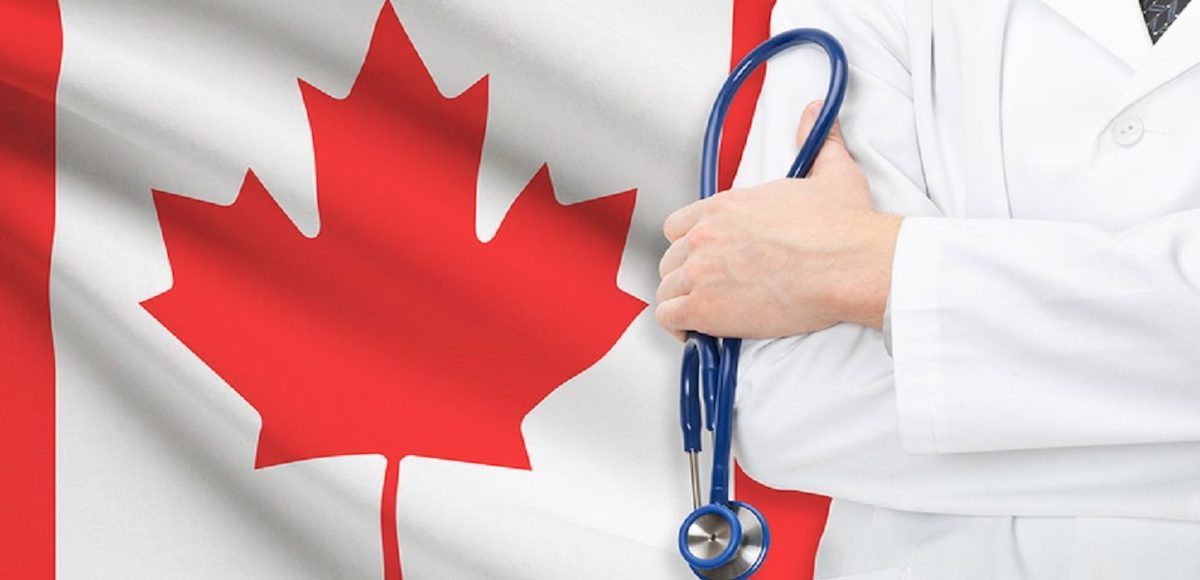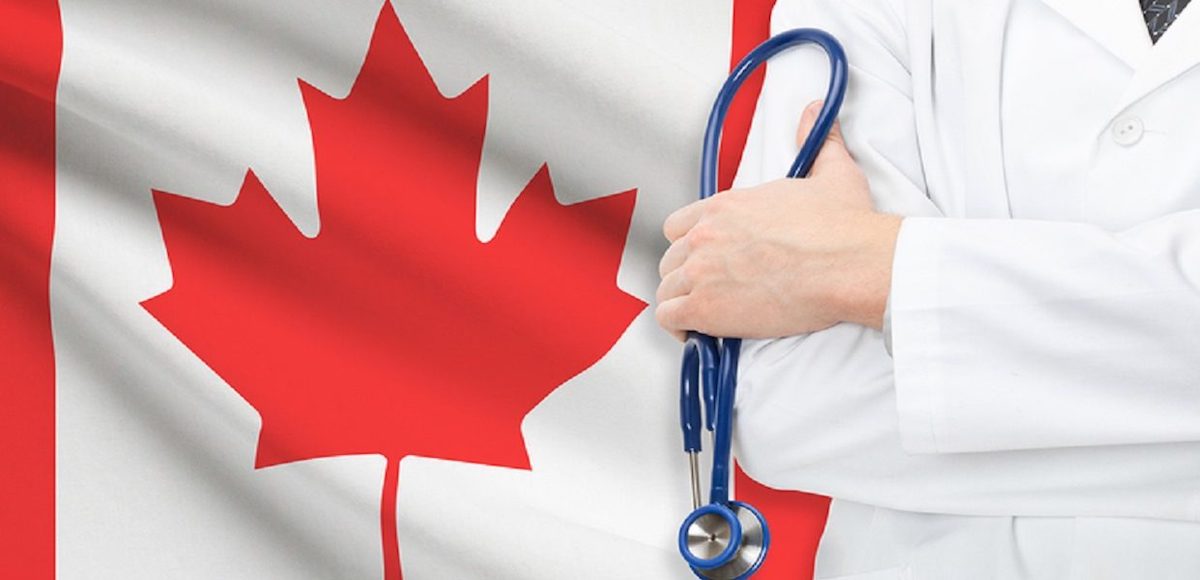

Canadian Health Care Graphic
Let me start with my thesis: Canadian-style healthcare system, with slight adjustments, is a great fit for American families, and especially those families that voted for Trump in the last election.
If you are reading this line, you obviously haven’t x-ed out in disgust so far, so let’s continue.
Implementing Canadian-style healthcare in America will first and foremost remove healthcare from the anxiety and financial expense columns for hard-working American families in the exurbs, the small towns, and the rural areas. These are the folks that have a hard-enough time doing an unscheduled brake job on their minivan, let alone paying healthcare co-pays and deductibles. So no more plan shopping, no more rate increases, no more worrying sick every time the husband is up on the roof with the nail gun.
Second, the implementation of this system will drive the cost of healthcare way down by cutting down to size the parasitic behemoths known as HMO’s and their various derivatives. There will be a private insurance market in supplemental medical insurance, but it will be a straightforward insurance market, similar to other kinds of insurance and of much smaller size.
Finally, the quality of essential care will remain as high as it is at present for most Americans and higher for low-income Americans who often choose to skip a doctor visit due to the co-pays and deductibles.
Coming to Canada seven years ago from Boston where my family and I were the beneficiaries of what is known as “Cadillac” healthcare plans substantially paid for by my employers, we were rather worried as to how the Canadian system would treat us. My first run-in with it was when something poked my hand when mowing my lawn and by evening it was the size of a baseball, hot and throbbing. It was pretty clear that it was time for an emergency room visit. This happened in a small town of about a thousand people far away from any major population centers. Luckily, it had a small regional hospital. The hospital was basic in terms of its amenities – nothing fancy. But within minutes I was seen by a physician who diagnosed me with a subcutaneous infection and opined that it was about to spread to my blood stream, which, she said, would not be a good thing. So there I was, with intravenous antibiotics, looking at a dingy ceiling that hadn’t been painted in 30 years. A couple of hours later I was at home with some antibiotics for which I paid $20 or so at the village pharmacy. The hospital visit and onsite treatment had cost me, ready for this? Nothing.
Since then, we have acquired a wonderful family doctor whom I can see same day with or without appointment. These visits cost me nothing. He has diagnosed me with Type II diabetes and hypertension, for which I will have to take medication for the rest of my life. I underwent ECG’s (prophylactically, my heart is fine), an ultrasound prostate exam (more pleasant than the one involving a human digit), and a CT colonoscopy, once again, rather less traumatic than the other kind. I also have a wart, for which I have to see a dermatologist. I am rather excited about that because it’s happening in June. The referral was in January. Our farmhand, an older guy, makes a living doing odd jobs painting houses and looking after peoples’ properties. His hobby is raising oxen for exhibitions. Recently, he was pinned to a wall by one of these 2,000 pound monsters and got a few crushed ribs. Diagnosis and treatment were free.
The experience I’ve had with the Canadian system, both personally and through my family and friends is not difficult to describe. Anything that must be done now – will be and to the highest levels of western medicine. This includes prophylactic testing such as colonoscopies and periodic bloodwork. Medical facilities have all the modern equipment, but none of the bells and whistles and the shiny looks of Boston’s Beth Israel Deaconess Hospital. Private room after surgery? – simply put, no. Any procedure that can be delayed will be, even if delaying it causes suffering. This includes hip replacements for the elderly as well as my wart. Drugs are cheaper than in the States, but still expensive. They are not covered by the government healthcare plan, though there is help for the low-income and elderly folk. You are only minimally covered if you travel outside of your home province and not at all when you travel outside of Canada.
There are supplemental medical coverage plans that are offered by most employers in Canada. They can also be purchased on the free market. These plans address the cost of drugs (pre-existing conditions excluded) and will cover you when travel both domestically and nationally, including medical evacuation back to your home base. They emphatically do not allow you to “jump the line” for non-essential procedures, nor get things like private hospital rooms. This is a matter of religious dogma with most Canadians. Our small business pays roughly $300 a month for a family of three for a plan such as this.
Having lived in North America for twenty years (thirteen in Massachusetts and seven in Nova Scotia), I can offer a simple trade-off analysis for the two healthcare systems. On the upside, under the Canadian system your family will never spend thousands of dollars on healthcare, while at the same time accessing the best possible level of essential and prophylactic care. On the downside, in Canada you will experience greatly reduced choice in physicians and healthcare facilities living in a major population center and no choice at all living in a rural area. In a city, you may choose your primary care physician, but when it comes to specialists or hospitals you go where and when they tell you to. Any quality of life procedures may be delayed many months and there is no “boutique” medicine. Facilities, even in large cities, may be crowded and subpar as far as convenience and appearance, though they are well equipped.
What this amounts to is a simple matter of family income; if as a family of four your household income is below $100,000 per annum, the benefits of the Canadian system outweigh the downsides, even if you are well insured. A range of incomes between $100,000 and $200,000 per annum is likely a wash, depending on specific circumstances such as where you live and how healthy your family is. For incomes above $200,000, the current American system, with its boutique medicine, nicer facilities, much greater choice, and same-day elective procedures wins the day.
In a recent column on a subject of healthcare, Ann Coulter suggested that if healthcare insurance could be traded on the open national market just like automobile insurance, all problems would be solved. This is a ridiculously wrong assertion due to two self-evident points. The pricing of automotive insurance relies on two critical items: controlling the benefits and having stable actuarial risk assessments. To illustrate this point, recall when you last crashed your car. It was towed somewhere where it was seen by an adjustor who determined where and how it would be repaired. The insurance company then paid for this repair. In fact, when your car insurance policy was issued in the first place, the underwriter had absolute certainty as to highest level of benefit they would ever be on the hook for: the replacement cost of your vehicle plus the limit on the liability (third party) part of your policy.
The ideas of controlling costs of “repair” and limiting the total exposure, both fly out the window when it comes to healthcare insurance. When a roofer puts a nail through her hand, she cannot choose to be treated using cheaper less effective treatment standard and neither can her healthcare insurer demand it. She will, of course, access the best and hence the most expensive standard of care that is currently available. (There are some exceptions to this such as generic vs. brand-name drugs, but they are on the margins). Over the lifetime of a healthcare insurance policy the cost of care will rapidly change and change in only one direction: up. Additionally, the modes of failure of the human body far exceed those of a motor vehicle and for all intents and purposes are close to infinite. This precludes any lifetime cap on essential care payouts by the underwriter, and in fact these caps are illegal under Obamacare and would make any essential care healthcare policy useless.
When it comes to healthcare, the so called “free market” is being asked to underwrite an unknown quantity of risk, with ever increasing cost of “repairs”, and with no limit on the lifetime benefit. This flies in the face of the fundamental concept of insurance: pricing premiums based on a stable risk assessment and the deterministic knowledge of the finite, never to be exceeded payout. For the twin reasons of the rapidly increasing standards and cost of care and the sociological unacceptability of letting people die because their insurance policy had maxed out, no amount of risk pooling, no actuarial exercises can alleviate the essential problems of healthcare as an insurable quantity. The free market cannot be a player in the essential healthcare insurance field.
However, the free market can and should be a player in the supplemental medical insurance field. Setting rigid caps on benefits such as medical evacuations, private hospital rooms, and non-essential care is sociologically acceptable in most places. So is limiting the types of covered procedures, which makes the risk assessment much more manageable. A vibrant and completely private (though of course regulated) marketplace can exist in this kind of supplemental medical insurance, because the twin pillars of any insurance business, stable risk assessment and limited payouts can be met.
Converting the 2.9% Medicare tax (currently split between the employer and the employee) to a Federal healthcare tax would allow the Federal government to support the states with the creation of a Canadian-style system of healthcare that guarantees free access to best-practices essential healthcare to the entire population of the United States regardless of age or employment status. The states will be responsible for administering this healthcare system via the existing networks of hospitals, clinics, and doctor offices. Furthermore, the states will be free to implement adjustments to the Federal system that are custom tailored to their specific circumstances. These adjustments may include programs like higher property taxes on luxury vacation homes to reduce the price of prescription medications, a plan that would very well suit a state like New Hampshire with its multi-million dollar lake homes set amid hardworking blue collar communities.
The Canadian restrictions on supplemental medical insurance that prohibit a “two-tier” healthcare system are likely not a good fit for America. Most Americans accept that healthcare, like anything else, is better when you’re rich. As long as they get the essentials, they will be fine with the rich guys getting more choice and fancier stuff; they always do anyway. Trump supporters fall squarely into the income bracket that would benefit the most from government healthcare and it’s time for Trump to call Pelosi and Schumer and trade his support for this idea for their acceptance of his tax plan and a private-public partnership infrastructure plan. This bipartisan trifecta will surely land him a spot on Mount Rushmore.






